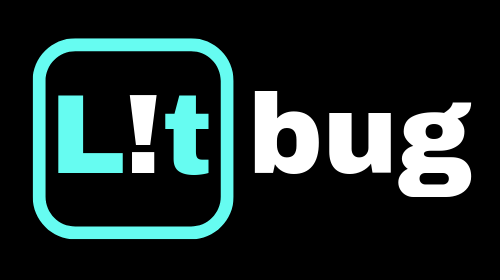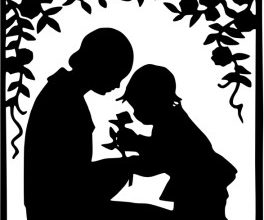My Greatest Ambition, written by Morris Lurie in 1984, is a short story that delves into the dreams and aspirations of a young protagonist. The story follows the journey of a teenager who aspires to become a comic-strip artist. The story provides insight into the protagonist’s thoughts, experiences, and interactions as he navigates the challenges of chasing his dreams. Morris Lurie, the author of the story, was an Australian writer known for his humor and wit. His writing often explored themes of identity, creativity, and the complexities of human relationships.
My Greatest Ambition | Summary
The narrator’s greatest ambition was to be a comic-strip artist, but people dismissed it as a phase. He viewed comics as unsuitable for Australia and thought the narrator would outgrow it. However, the narrator persisted in his dream and created a six-page comic-strip, unsure of what to do with it. A classmate named Michael Lazarus suggested sending it to a magazine. The narrator, excited by the idea of publication, mailed it to Boy Magazine. The narrator’s father, a skeptic, teased him about payment and doubted the magazine’s interest. Despite his skepticism, the narrator received a letter from Boy Magazine expressing interest and requesting an appointment with the editor. The narrator excitedly made the call from a public phone to arrange the meeting. He worries about taking a day off school for the meeting and wrestling with what to wear.
As the appointment approaches, the narrator receives a telegram from the magazine, changing the date due to the editor’s unavailability. Despite his initial anger, the narrator makes a new appointment over the phone. On the day of the meeting, the nervous narrator takes the train to the magazine’s office.
The office turns out to be less grand than expected. He encounters an ordinary receptionist and waits in the foyer, feeling both excited and self-conscious while trying to appear professional. The narrator enters an office filled with three men in gray suits, including someone named Randell. The men stand up when the narrator enters, causing a moment of awkwardness. The scene is marked by handshaking, introductions, and smiles, but everyone appears unsure of how to proceed, leading to an uncomfortable silence. Mr. Randell quickly offers the narrator fifteen pounds for his comic, which the narrator accepts promptly. Mr. Randell seems surprised by the quick response and mentions the payment per page. There’s an awkward pause before he brings up minor spelling errors in the comic. The narrator offers to correct him, but Mr. Randell suggests his team will make the changes. He confirms the acceptance of the corrections. Mr. Randell assures the narrator that a cheque will be sent later, and the conversation falls into silence. Another man named Jim asks about the narrator’s first comic strip and praises its professionalism. Jim then takes the narrator to see the printing presses and the magazine production process. The narrator receives an ice cream and is led on a factory tour.
The experience eventually ends, and the narrator rides the train home, not worrying about school or his appearance. In the end, the narrator’s comic-strip appeared and brought him a moment of fame among his friends at school. While his father examined the cheque skeptically, his mother proudly boasted to friends about his achievement. Despite this, the narrator was unimpressed by the label of ‘clever.’ He kept the factory tour experience to himself and sent another comic to Boy Magazine, hoping to continue business with Miss Gordon over the phone. After weeks of waiting, He received his comic back with a letter stating that the magazine was ceasing publication. Although the narrator’s father found amusement in the situation, the narrator decided that pursuing a career as a comic-strip artist was not worth the uncertainty. He attempted to shift his focus to becoming a serious painter, but the spark was gone, and he found himself becoming just another dreamer like everyone else.
My Greatest Ambition | Analysis
‘My Greatest Ambition’ by Morris Lurie is a whimsical yet thought-provoking exploration of youthful dreams, parental expectations, and the contrast between idealism and reality. With comedy, sarcasm, and relatability, Lurie eloquently portrays the essence of adolescence by taking readers on a journey inside the head of a young kid who desires to be a comic-strip artist through a first-person narrative. The narrative opens with a tone of nostalgia and introspection as the protagonist recalls his childhood fascination with comic books. The description of his father bringing home a stack of American comic books that ‘kept him alive’ highlights the transformational power of childhood imagination. The protagonist criticizes others as ‘dreamers’ with his ‘heads in the clouds,’ but ironically, he stubbornly holds onto his aim of becoming a comic-strip artist. This is an example of Lurie’s use of sarcasm. This establishes the central theme of dreams versus reality, portraying how youthful idealism often clashes with the pragmatic adult world.
The significance of the comic strip is highlighted through elaborate descriptions, reflecting the protagonist’s deep emotional connection to his creation. The comic strip is a symbol of the protagonist’s aspirations and a world of possibilities. Lurie juxtaposes the protagonist’s reactions to his comic, ranging from critical analysis to eventual satisfaction, with the unintentional path it takes toward publication. This contrast between intention and outcome humorously mirrors the unpredictable nature of life’s twists and turns. The family dynamics, particularly the father’s skepticism and the mother’s pride, add layers of comedy and irony. The father’s exaggerated doubts, conveyed through repetitive questions and humorous anecdotes, create a light-hearted mockery of the protagonist’s ambitions. In contrast, the mother’s effusive pride, showcased in her enthusiastic phone calls to friends and family, offers a touching portrayal of a parent’s support and devotion.
Lurie’s narrative methods, including first-person narration, emphasize the protagonist’s introspection and retrospection, effectively revealing his naive yet endearing outlook on life. The protagonist’s internal monologue and emotional responses, such as his eagerness to shout during phone conversations, capture the awkwardness and enthusiasm of youth. The visit to the Boy Magazine offices provides a humorous twist as the protagonist’s idealized expectations of a glamorous workplace collide with the reality of an ‘ordinary’ setting. The author plays with reader expectations, creating dramatic irony as the protagonist remains blissfully unaware of the humorous confusion caused by his age. The story’s structure enhances its thematic depth. Lurie masterfully weaves a circular narrative, revisiting the protagonist’s childhood aspirations at the end. This circularity underscores the idea that, like ‘everyone else,’ the protagonist has transitioned into a ‘dreamer’ by adulthood, highlighting the fleeting nature of youthful dreams. Through its exploration of themes such as dreams versus reality, youthful idealism, and family dynamics, ‘My Greatest Ambition’ provides readers with an engaging and insightful reflection on the journey from adolescence to adulthood. Lurie’s skillful use of humor, irony, and relatable experiences makes this autobiographical story a touching and relatable read for readers of all ages.
My Greatest Ambition | Themes
The theme of conflict between dreams and reality is a central and recurring motif. It explores the tension between the protagonist’s youthful aspirations and the practical constraints and challenges of the real world. At the start of the story, the protagonist’s dream of becoming a comic-strip artist is portrayed with a sense of youthful idealism. People around him, including his parents and classmates, view his ambition as unrealistic and frivolous. This reflects the clash between the protagonist’s idealistic dreams and the more practical perspectives of those around him. As the story unfolds, the protagonist faces challenges and setbacks that highlight the gap between his dreams and the obstacles He encounter.
The narrative poses issues on striking a balance between following one’s passion and taking into account pragmatic issues. The internal conflict of the protagonist is a reflection of the difficulty many people have in balancing his aspirations with the obligations and reality of life. A bittersweet conclusion to the tale emphasizes the intricate connection between dreams and reality. The development of the main character shows a stronger comprehension of the trade-offs and decisions that come with age and the quest for personal fulfillment. The narrative examines the frequently difficult process of balancing one’s youthful ideals with the practical realities of life, illuminating the complexity and subtleties of managing the aspirational pursuit.
At the outset of the story, the protagonist’s youthful idealism is evident through his passionate pursuit of becoming a comic-strip artist. His unwavering belief in the possibilities of success and the joy He derives from creating comic strips reflect the optimism and innocence of youth. As the story progresses, the protagonist faces challenges and obstacles that challenge his youthful idealism. Skepticism from others, rejection from Boy Magazine, and the closure of the publication all contribute to a sense of disillusionment that contrasts with the initial enthusiasm. A reality check is provided by the protagonist’s experience during the factory visit. The contrast between the ordinary, factory-like setting and his inventive expectations serves as a turning point in his development. This experience serves as a metaphor for the awareness that part of growing up is realizing how complicated and practical the world is. When the protagonist muses over a change in his aspirations and considers serious painting as a potential career route, the subject of maturing and adulthood becomes more apparent. This change denotes a maturity process in which the protagonist starts to investigate new directions that fit with his changing perception of reality.
My Greatest Ambition | Title
The title of the story, ‘My Greatest Ambition,’ encapsulates the central theme and focus of the narrative. The title first gives the impression that the protagonist’s greatest desire is what propels the narrative. But as the narrative progresses, it becomes clear that there’s more to it than merely following a dream. The title becomes more ironic as the plot develops. The ‘greatest ambition’ of the protagonist isn’t only about reaching a certain objective; rather, it stands for a unique journey of self-discovery and shifting viewpoints. The narrative demonstrates how the protagonist’s perception of his aspirations evolves through time. It represents the protagonist’s original desire of becoming a comic-strip artist, but it also acts as the impetus for a more in-depth investigation of personal development, evolving aspirations, and the occasionally complicated link between aspirations and realities.
My Greatest Ambition | Character Sketch
Narrator: Young and motivated, the narrator is passionate about becoming a comic-strip artist. His zeal is contagious as he pursues his artistic goal in the face of opposition. He is creative and has a strong imagination and love of comic books. His independence stands out since He make decisions based more on his own preferences than on following social conventions. But he also goes through internal struggles and self-doubt, which emphasizes his introverted character. He exhibits aggressiveness and a willingness to act when possibilities arise. Despite his idealistic and optimistic youth, he exhibits a restrained side by keeping some experiences private.
My Greatest Ambition | Literary Devices
The story is told from a first-person perspective, with the protagonist as the narrator. This narrative method provides readers with direct insight into the protagonist’s thoughts, feelings, and experiences. The use of first-person narration creates a personal and intimate connection between the reader and the protagonist. This perspective allows readers to witness the protagonist’s internal conflict, emotional journey, and evolving understanding of his dreams and reality. Through the narrator’s voice, readers gain a unique understanding of the protagonist’s hopes, disappointments, and growth.
The narrative employs elements of comedy and humor to highlight the protagonist’s perceptions, interactions, and outlook on his experiences. The humor often arises from the protagonist’s naive and exaggerated expectations, as well as his reactions to unexpected situations. For example, the protagonist’s misinterpretation of the term ‘ambulate’ or his insistence on wearing his Good Suit for the business appointment adds comedic moments to the story. The use of comedy serves to lighten the narrative, create contrast, and enhance the reader’s connection to the protagonist’s character.
The story uses characterization to develop a multi-dimensional portrayal of the protagonist. Through the protagonist’s thoughts, actions, and interactions, readers gain insights into his personality traits, desires, conflicts, and growth. The protagonist’s unwavering passion for comic strips, his youthful idealism, and his determination to pursue his dreams contribute to his characterization. The portrayal of his interactions with family members, peers, and authority figures like Miss Gordon adds depth to his character. The narrator’s voice and internal monologues also reveal his introspective nature and evolving perspectives. The characterization of the protagonist enables readers to empathize with his journey and emotional experiences.
The use of imagery helps the reader better comprehend the story’s plot, characters, and ideas. The protagonist’s reactions to the comic are described in vivid language such as ‘read it through sixty or seventy times, analyzed it, studied it, stared at it.’ The comic is described as a ‘full length, inked-in, original, six-page comic strip.’ This visual highlights the protagonist’s intense devotion to his artistic endeavors and prepares the reader for the story’s examination of young people’s hopes and desires. Lurie contrasts the protagonist’s romanticized aspirations with the reality of the office setting when the protagonist visits the Boy Magazine offices. The office is described as ‘part of an enormous building that looked like a factory’ and lacking in the grandeur the protagonist had imagined. This imagery underscores the juxtaposition between youthful fantasies and adult realities.
Lurie’s storytelling style combined humor with keen observations, offering readers a glimpse into the human experience through relatable and engaging narratives. ‘My Greatest Ambition‘ is one of his well-known works that captures the essence of youthful aspirations and the bittersweet realities that come with it.


